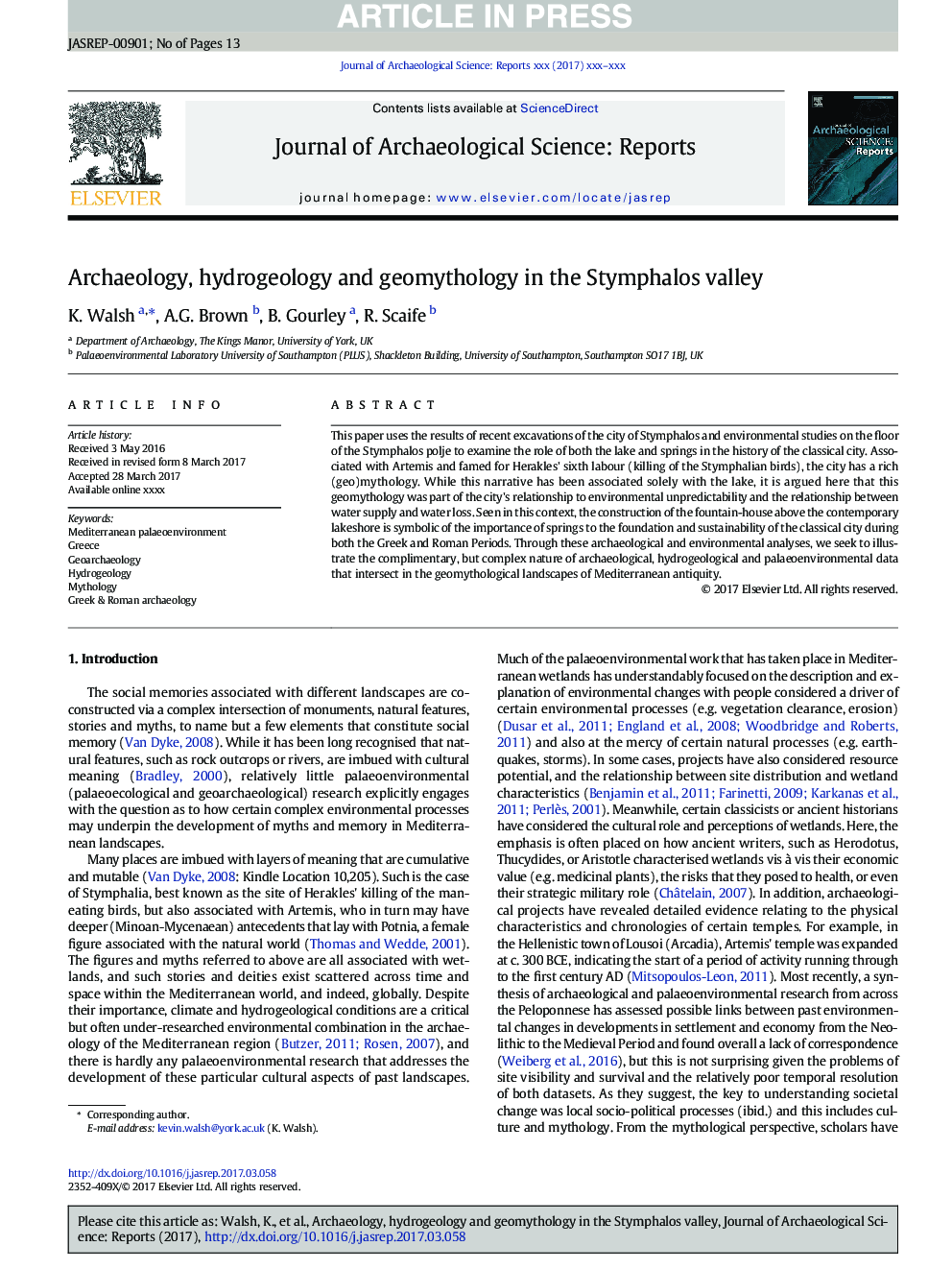| Article ID | Journal | Published Year | Pages | File Type |
|---|---|---|---|---|
| 7445077 | Journal of Archaeological Science: Reports | 2017 | 13 Pages |
Abstract
This paper uses the results of recent excavations of the city of Stymphalos and environmental studies on the floor of the Stymphalos polje to examine the role of both the lake and springs in the history of the classical city. Associated with Artemis and famed for Herakles' sixth labour (killing of the Stymphalian birds), the city has a rich (geo)mythology. While this narrative has been associated solely with the lake, it is argued here that this geomythology was part of the city's relationship to environmental unpredictability and the relationship between water supply and water loss. Seen in this context, the construction of the fountain-house above the contemporary lakeshore is symbolic of the importance of springs to the foundation and sustainability of the classical city during both the Greek and Roman Periods. Through these archaeological and environmental analyses, we seek to illustrate the complimentary, but complex nature of archaeological, hydrogeological and palaeoenvironmental data that intersect in the geomythological landscapes of Mediterranean antiquity.
Related Topics
Social Sciences and Humanities
Arts and Humanities
History
Authors
K. Walsh, A.G. Brown, B. Gourley, R. Scaife,
